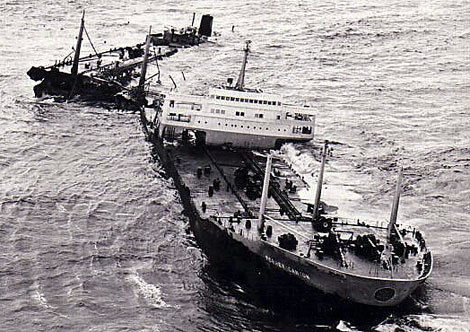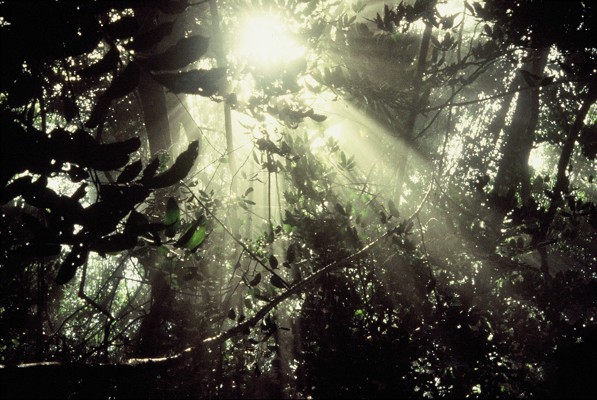Continuing this week’s Now & Then theme, today we investigate the changing focus of environmental conservation efforts over the last 50 years. Advances in scientific research and technology have seen a variety of issues pass under the spotlight of the global scientific community.
Since the 1960’s, the list of issues to have attracted scientific as well as public attention is seemingly endless, with concerns ranging from over-population to over-fishing, and lots in-between. Some of these issues have remained a constant presence, with regular updates appearing in the media, such as that of global warming. Others have seemingly come and gone, receiving brief attention until the issue is no longer relevant, such as the hole in the ozone layer.
The late 50’s, and throughout the 60’s bore witness to various significant events and discoveries on issues which, in some cases, are still very relevant today. It was in 1958 that a young scientist named Charles David Keeling first began plotting the Keeling curve, providing the earliest evidence of increasing levels of atmospheric CO2. 1961 saw the creation of what is now the World Wide Fund for Nature (WWF), which would go on to be a leading non-governmental organization for international conservation. In 1962, Rachel Carson’s Silent Spring was published, detailing the negative effects of pesticides on the environment.
 Focusing on the detrimental consequences to wildlife, the book is cited by many as one of the key contributors to beginning the environmental movement. The very first photos of Earth from space, taken by NASA’s lunar missions, are often associated with revealing the fragile and finite state of our planet and its resources. In 1967, the wreckage of the Torrey Canyon was the most significant oil spill in history at the time, leaking 118,000 tons of crude oil off the English coast at Land’s End and raising general awareness of dangers to the environment. In 1968, the first UNESCO Biosphere Conference was held in Paris, marking a significant point in an international agreement on how best to tackle perceived environmental threats, such as pollution and resource loss, amongst others.
Focusing on the detrimental consequences to wildlife, the book is cited by many as one of the key contributors to beginning the environmental movement. The very first photos of Earth from space, taken by NASA’s lunar missions, are often associated with revealing the fragile and finite state of our planet and its resources. In 1967, the wreckage of the Torrey Canyon was the most significant oil spill in history at the time, leaking 118,000 tons of crude oil off the English coast at Land’s End and raising general awareness of dangers to the environment. In 1968, the first UNESCO Biosphere Conference was held in Paris, marking a significant point in an international agreement on how best to tackle perceived environmental threats, such as pollution and resource loss, amongst others.
The beginning of the 1970’s was marked by the first Earth Day, established by the peaceful protests of 20million people in the USA to raise awareness of environmental issues. A call for greater understanding and research into climate change was issued by the Massachusetts Institute of Technology (MIT). Elsewhere, a 1972 report concluded that three-quarters of the acid rain falling in Sweden was due to pollution created by other countries. The issue of illegal trade in endangered species was addressed but not solved with the adoption of the Convention on International Trade in Endangered Species of Wild Fauna and Flora (CITES) in 1973.
 Indigenous communities in Northern India facing the consequences of commercial logging, such as soil erosion and flooding, began the Chipko movement in an attempt to protect the region’s forests. In 1974, a major scientific discovery based on research by Lovelock, Rowland and Molina linked the production of CFC’s (chlorofluorocarbons) with the depletion of the ozone layer resulting in the penetration of dangerous UV rays into the atmosphere. A 1979 World Climate Conference in Geneva highlighted the link between rising atmospheric levels of CO2 with the “greenhouse effect”, a warning that was essentially ignored until the end of the following decade by most governments.
Indigenous communities in Northern India facing the consequences of commercial logging, such as soil erosion and flooding, began the Chipko movement in an attempt to protect the region’s forests. In 1974, a major scientific discovery based on research by Lovelock, Rowland and Molina linked the production of CFC’s (chlorofluorocarbons) with the depletion of the ozone layer resulting in the penetration of dangerous UV rays into the atmosphere. A 1979 World Climate Conference in Geneva highlighted the link between rising atmospheric levels of CO2 with the “greenhouse effect”, a warning that was essentially ignored until the end of the following decade by most governments.
By Alex Prior
Stay tuned this week to read the concluding part of this article
